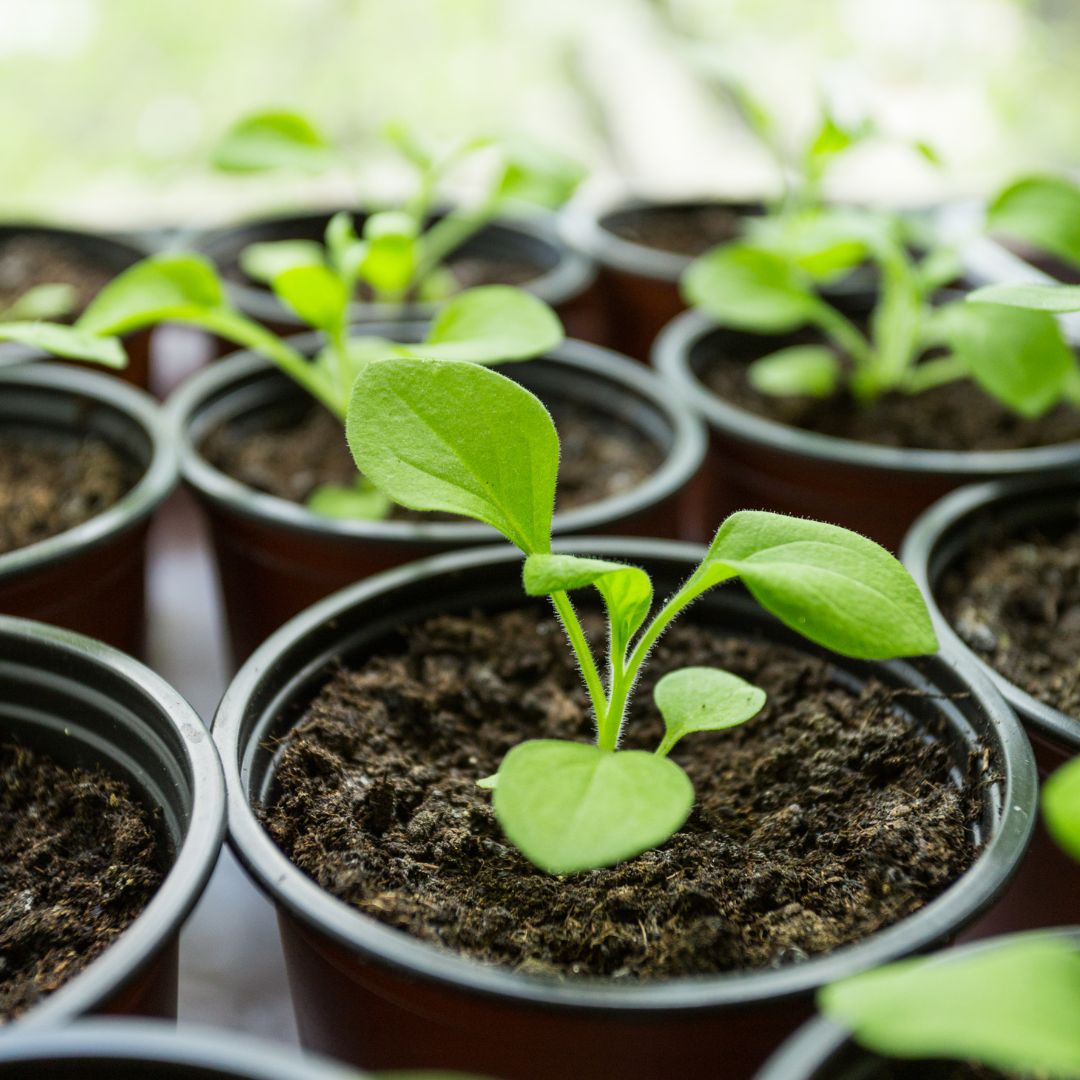
Now is the time to start planning your vegetable garden by making a schedule for your indoor seed starting. Some seeds such as peas, beans, corn, radishes, carrots, and beets should be directly sown outside but many others, such as tomatoes, peppers and eggplant can be started indoors. One of the best sources of information about starting seeds indoors can be found right on the seed packet. You will find information on the label about days to germination and harvest, depth to plant, optimal soil temperature for germination, seed spacing, and how many weeks before the last frost to start indoors. Some seeds such as peas, beans, corn, radishes, carrots, and beets should be directly sown outside.
You may need to adjust your schedule slightly depending on your indoor growing conditions. If the air and soil temperatures are below 70, then seeds will take longer to germinate and seedlings will grow more slowly. Conversely, if temperatures are above 70, seeds will germinate faster and seedlings will grow more quickly.
Although you may be dreaming of springtime and fired up to get your seeds going, don’t be too hasty. Seedlings that spend too much time indoors may end up weak and spindly. Instead of rushing to sow, get out your seed packets and make a seed starting calendar!
According to The Farmer’s Almanac, the dates given below are the best time to start seeds indoors and then to transplant young plants outside, based on an average last spring frost occurring on May 6. Frost dates are based on 30-year rolling averages, so they are only a guide of what is “typical.” Every year can be different.
Also, every garden can have what we call “microclimates” (e.g., an area in the dip of a valley or on the slope of a mountain) which differ. You’ll need to use your best judgment and this guide as a good starting place. Remember, all seedlings grown indoors will need to be “hardened off” prior to planting outside. Over time, you’ll gain experience and learn what works best in your garden!
| Crop | Start Seeds Indoors | Plant Seedlings Outdoors |
| Basil | March 10-25 | May 6-27 |
| Bell Peppers | Feb. 24-March 10 | May 13-27 |
| Broccoli | March 10-25 | April 8-29 |
| Brussel Sprouts | March 10-25 | April 8-22 |
| Cabbage | March 10-25 | April 8-22 |
| Cantaloupes | April 8-15 | May 20-June 3 |
| Cauliflower | March 10-25 | April 8-29 |
| Celery | Feb. 24-March 10 | May 13-27 |
| Cucumbers | April 8-15 | May 20-June 3 |
| Eggplants | Feb. 24-March 10 | May 20-June 3 |
| Kale | March 10-25 | April 8-29 |
| Kohlrabi | March 25- April 8 | April 15-22 |
| Lettuce | March 25-April 8 | April 22-May 20 |
| Oregano | Feb. 24-March 25 | May 6-27 |
| Pumpkins | April 15-29 | May 20-June 3 |
| Rosemary | Feb. 24-March 10 | May 13-June 3 |
| Sage | March 10-25 | May 6-20 |
| Summer Squash | April 8-22 | May 20-June 3 |
| Swiss Chard | March 25-April 8 | April 15-22 |
| Thyme | Fe. 24-March 25 | May 6-27 |
| Tomatoes | March 10-25 | May 13-June 3 |
| Watermelons | April 8-15 | May 20-June 3 |
From The Old Farmer’s Almanac







